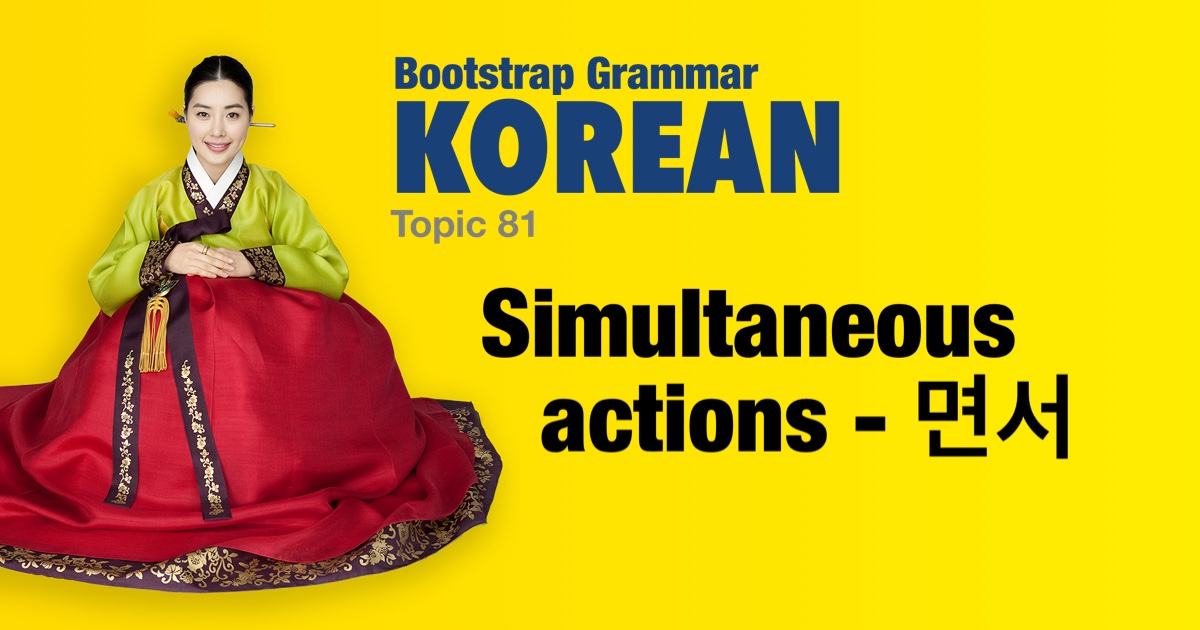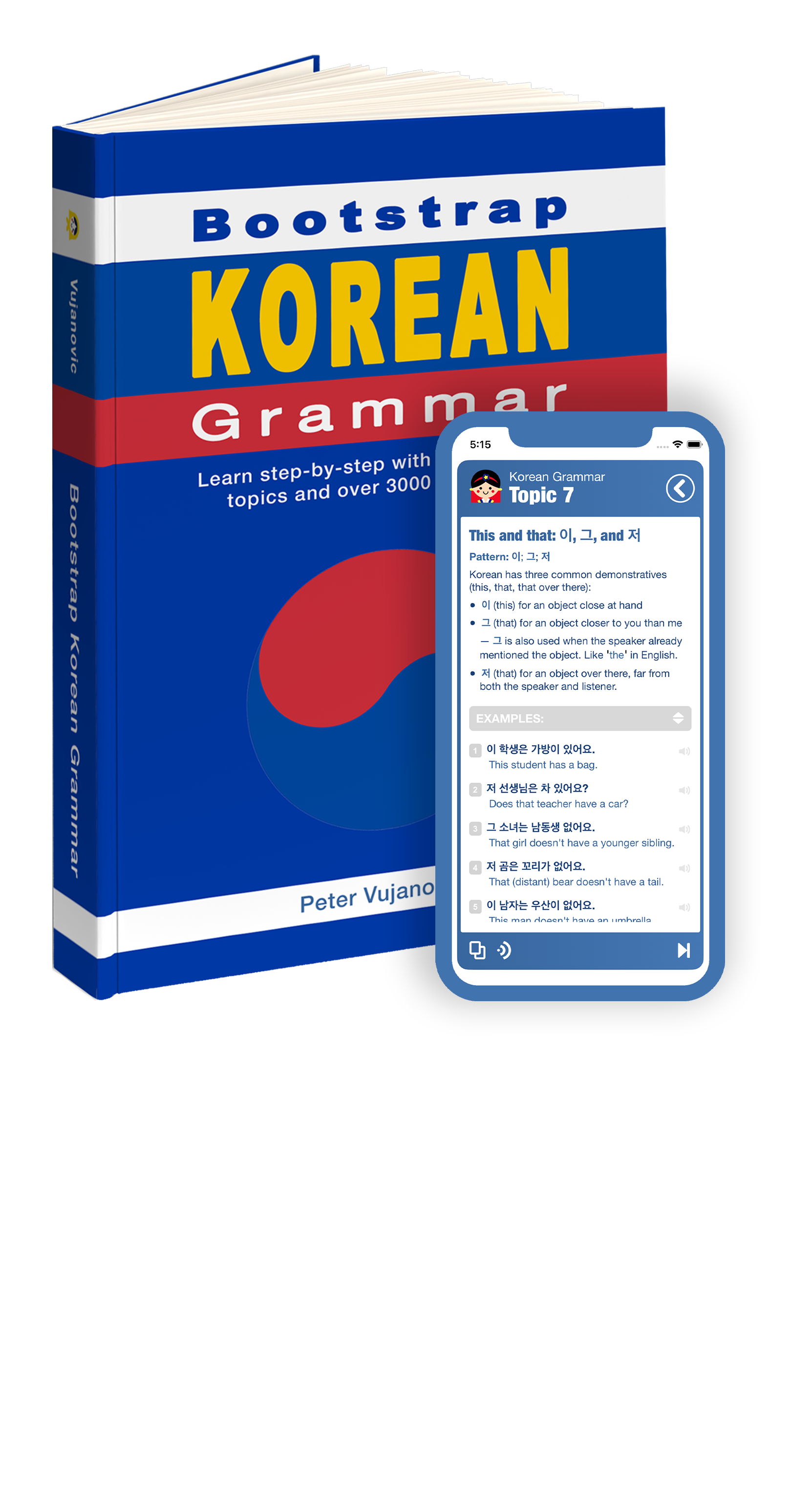Korean grammar - Simultaneous actions - 면서 |
|||
|
|||
Pattern: Verb stem + (으)면서 The Verb stem + (으)면서 is used for simultaneous actions. The pattern can be used in any tense but the clause with (으)면서 should always be in the present tense. This ending can also be used with descriptive verbs but then it just means 'and' but has the sense that the descriptions are interrelated or connected in character. It can also be used with the verb 이다 (to be) where the subject is two things at the same time. This expresses mild contradiction (..while also being..). |
| Examples: | |
|
친구를 기다리면서 책을 읽고 있어요.
(I) am reading a book while waiting for a friend.
|
|
|
저는 직장을 다니면서 대학원도 다니고 있어요.
I am working while also attending university.
|
|
|
음악을 들으면서 청소하고 있어요.
(I) am cleaning up while listening to music.
|
|
|
운전하면서 전화하지 마세요.
Don’t use phone while driving.
|
|
|
언니가 샤워를 하면서 노래를 불러요.
(My) (female's) older sister sings songs while having a shower.
|
|
|
친구를 기다리면서 뉴스를 읽고 있어요.
(I) am reading the news while waiting for (my) friends.
|
|
|
저는 밥을 먹으면서 공부했어요.
I ate while studying.
|
|
|
버스에 타면서 라디오를 들을 거예요.
While taking the bus, (I) will listen to the radio.
|
|
|
우리는 팝콘을 먹으면서 영화를 봤어요.
We watched a movie while eating popcorn.
|
|
|
지하철에 타면서 수업 준비를 할 거예요.
While riding the subway, (I) will prepare for class.
|
|
|
이 음식은 매우면서 달콤해요.
This food is spicy and sweet.
|
|
|
어제 날씨가 흐리면서 쌀쌀했어요.
The weather yesterday was cloudy and chilly.
|
|
|
그 동상은 아름다우면서 흥미로워요.
That statue is beautiful and interesting.
|
|
|
그는 저의 사장님이면서 친구예요.
He is my boss and (while also being) my friend.
|
|
|
그 사람은 의사이면서 교수였어요.
That person was a doctor and (while also being) a professor.
|
|
|
요즘 핸드폰은 전화기이면서 컴퓨터예요.
Cell phones these days are phones and (while also being) computers.
|
|
 |
|


 Progressive Tense
Progressive Tense
